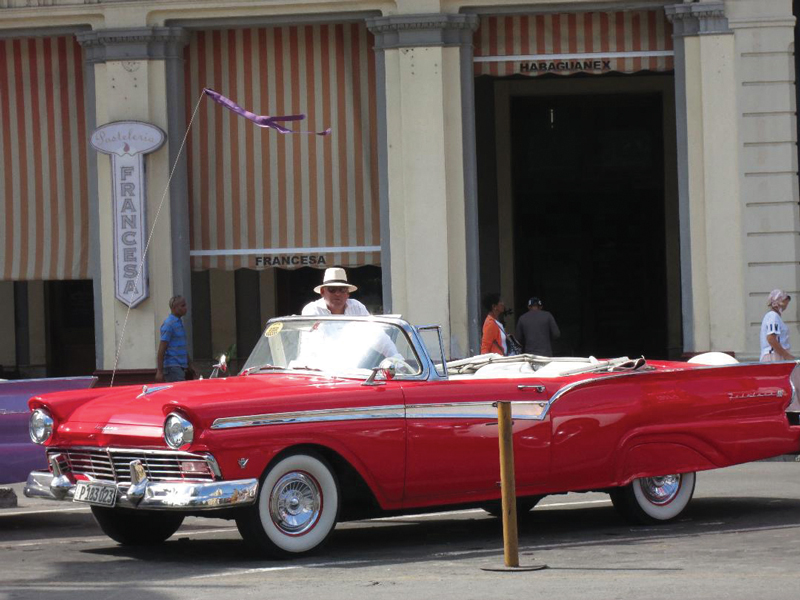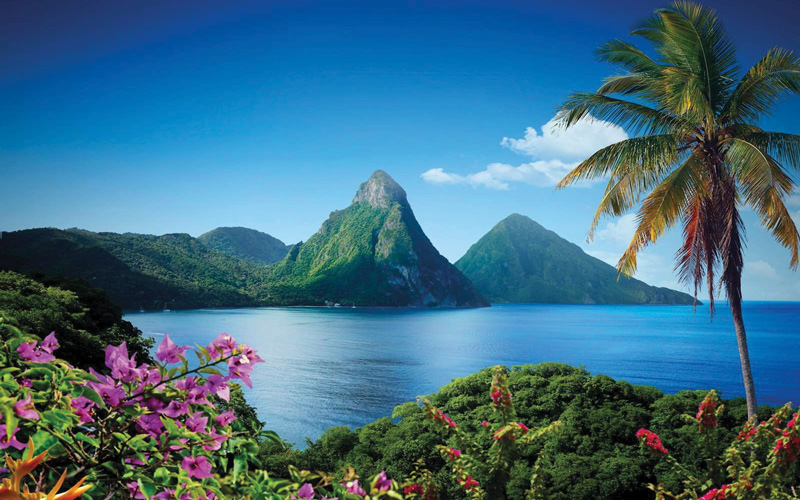
the old cars. You don’t need to be in love with classic cars to warrant a visit, but your mind may certainly change during your first few hours in Havana.
Although Cuba is only a 90-mile stone’s throw away from the US, no new American cars have made their appearance on the island since the 50’s. After the 1959 Cuban Revolution, leader Fidel Castro placed a ban on foreign vehicle imports, including parts. As a result, Cubans had to keep alive what they had, so they hand-made car parts, improvised, took engines out of old Russian cars, and even used house paint.
There are around 60,000 classic American cars in Cuba. Fifty percent date back to the 40’s and 50’s. In Old Havana some look shiny and new as if they just rolled off the assembly line; others sit broken down in the street with Cuban men hunched over their engines; others are being washed and pampered like a well-loved pet. The taxi drivers might be dressed up in bow ties and straw hats, ready to take you on a city tour or a slow drive along the Macedon (ocean-side drive). There are old Chevys, Buicks, Fords, Chryslers, Plymouths, Dodges, and Studebakers. Cuba is literally like a rolling car museum. The cars are often family heirlooms, passed down from generation to generation, and taxi drivers make up the bulk of the owners.
When we wanted to move between towns in Cuba, we typically traveled in a “shared taxi.” Our homestay hosts arranged them for us the night before. The taxis are old cars, of course, and you share them with other travelers who are going to the same town. The travelers are all different ages, from all over the world, making it a special way to travel. Everyone pitches in – between $20-30, depending on
the distance.
TRINIDAD, CUBA
If you only have time for one other Cuban destination outside Havana, head to Trinidad, 288 kilometers east – in the central part of the island, a 4-1/2 hour drive. Trinidad is known for its exquisite colonial old town, sleepy cobblestone streets, and pastel colored houses with wrought-iron grilles and balconies. Its neo-baroque main square, Plaza Mayor, is surrounded by grand colonial buildings, creating a type of open-air museum in its city center. This historic section is a world heritage site that was founded over 500 years ago by the Spanish. With only an occasional classic taxi lumbering through, you’re more likely to see an oxen and cart making deliveries.
When the sun drops low in the horizon, head to the plaza for the best photos as the light rays reach long and golden. Great affordable restaurants radiate from the plaza, as you wait for the Casa de Musica, located next to the cathedral in Plaza Major, to come alive. Every night, live bands entertain visitors as they hang on the stone steps and sit at tables, sipping mojitos and daiquiris, listening and dancing. If you need extra encouragement, salsa lessons are offered in a side plaza as instructors tap out beats on a wooden clave.
Trinidad’s main industry is tobacco, making this area the place to buy cigars and see them being made. The best way is to wander through picturesque fields and hillsides on a horse, and the best stable is owned by the town’s famous horse whisperer, Julio Munoz. Julio’s exceptional horses are well fed and cared for lovingly, and they lead you to breath-taking waterfalls, stopping at coffee plantations along the way, and to sample a hand-rolled cigar. Julio also offers a casa particular (homestay); he specializes in photography classes, and is a Cuban Ambassador to the people-to-people program.
Beautiful places inspire artists, and Trinidad has some fine galleries around town worth checking out. One notable artist is Julio Cesar Cepeda Duque. This internationally famous artist makes amazing mixed media art using found items. Julio creates his pieces and then covers them with a warm patina. Living in Cuba, it is often challenging for an artist to secure canvas and paints to create work, so ingenuity and creativity are necessary skills for every Cuban to develop. Julio’s wall sculptures and art can be found at the El Gato Negro Gallery in Trinidad.
Before flying home from Havana, top off your trip by indulging in a city night tour in one of the beautiful classic convertibles. As lively music fills the air and the warmth of the lovely people take hold of your heart, Cuba will become a holiday memory you will not
soon forget.




